ICI Viewpoints
Five Takeaways from the 2024 Fact Book
The Investment Company Fact Book is a vital tool in ICI’s efforts to provide reliable data to the public discourse surrounding regulated funds. Now in its 64th edition, ICI’s flagship product remains the go-to source for policymakers, academics, market participants, and reporters. Whether you’re searching for specific statistics, explanations of broader industry trends and developments, or regulatory and policy information, the Fact Book has you covered.
Here are five key takeaways from this year’s edition:

Total US retirement assets multiplied 4.5 times between 1995 and 2023, fueled largely by IRAs and 401(k) plans. Assets in these individual-based retirement accounts continue to represent a growing share of the US retirement market, reaching 63 percent at the end of last year, up from 58 percent in 2015 and 43 percent in 1995.
US Retirement Market Assets
Trillions of dollars, year-end
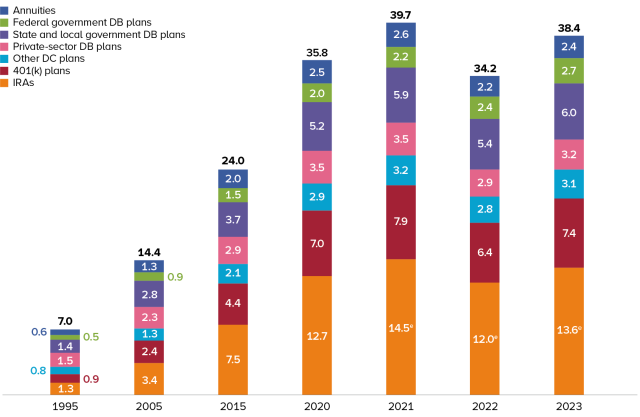
e Data are estimated.
Source: Investment Company Institute. For a complete list of sources, see Investment Company Institute, “The US Retirement Market, Fourth Quarter 2023.”
Thanks in part to IRAs, 401(k)s, and other types of defined contribution plans, many US retirees maintain the standard of living they had while working, according to a study by ICI economists. Indeed, at every age through age 72, the typical individual maintained more than 90 percent of the inflation-adjusted spendable income they had, on average, from age 55 through age 59.

Despite rising geopolitical risks, markets performed strongly in 2023, in large part due to meaningful progress on the inflation front, expectations for interest rate cuts by major central banks, and optimism over emerging AI technologies. With the value of the stocks and bonds underlying regulated long-term funds increasing, worldwide demand for these funds rose sharply, going from net redemptions of $156 billion in 2022 to net sales of $781 billion in 2023.
Worldwide Net Sales of Regulated Open-End Long-Term Funds Increased in 2023
Billions of US dollars by region, annual
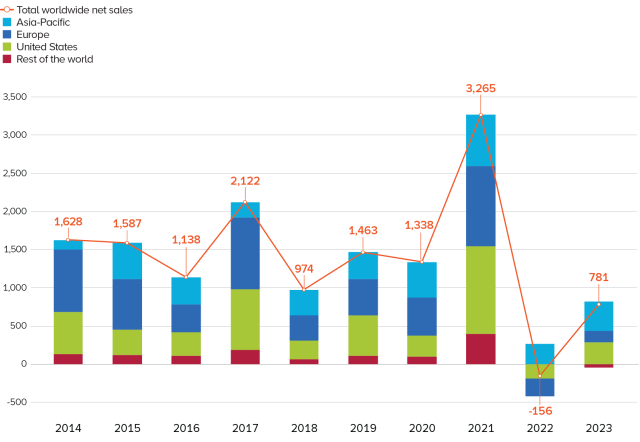
Note: Regulated open-end funds include mutual funds, ETFs, and institutional funds. Long-term funds include equity funds, balanced/mixed funds, bond funds, and other funds (guaranteed/protected, real estate, and other funds), but exclude money market funds.
Source: International Investment Funds Association

Large shares of Millennial households (48 percent) and Gen Z households (35 percent) owned mutual funds in 2023. As ICI research has shown, these younger generations are more engaged in retirement saving and have more than twice the assets—adjusted for inflation—in defined contribution plans compared with earlier generations at the same age.
Mutual Fund Ownership Is Higher Among Older Generations
Percentage of US households within each generation group, 2023
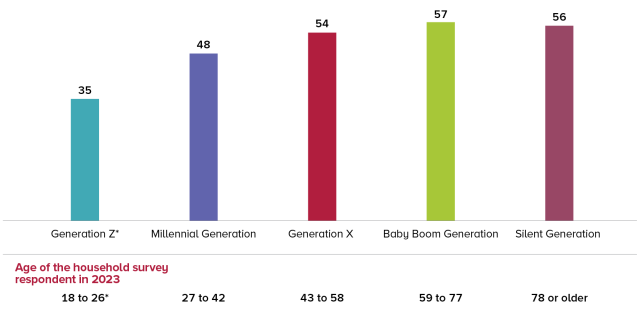
* Generation Z (born 1997 to 2012) are aged 11 to 26 in 2023; survey respondents, however, must be 18 or older.
Note: Generation is based on the age of the household survey respondent.
Source: ICI Research Perspective, “Characteristics of Mutual Fund Investors, 2023”

Assets in traditional closed-end funds (CEFs) increased last year on the strength of bond and stock market performance. Nevertheless, no new traditional CEFs entered the market amid rising and increasingly concentrated threats from activist hedge funds, which often seek to usurp control of traditional CEFs to generate short-term gains.
On the other hand, the number of interval funds, tender offer funds, and business development companies—the three other types of CEFs—each increased, as did their assets, as they have for several years. With nontraditional CEFs continuing to flourish, total assets in these funds climbed to $296 billion by the end of 2023, more the double the amount just three years earlier.
Interval Funds, Tender Offer Funds, and BDCs Have Flourished in Recent Years
Year-end1
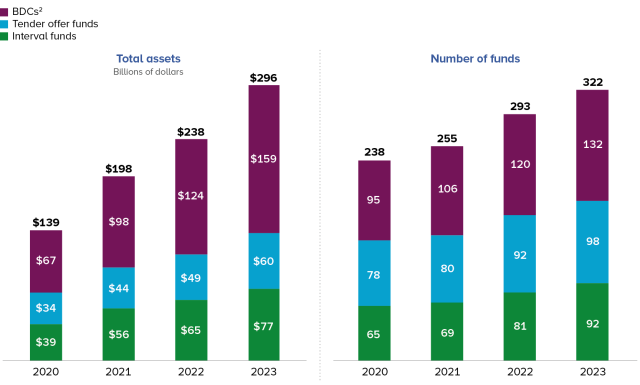
1 Data are based on quarterly public filings between November and January.
2 Total assets of BDCs are total net assets.
Note: Data for number of funds exclude feeder funds. Data include funds that do not report statistical information to the Investment Company Institute.
Source: Investment Company Institute calculations of data from publicly available SEC Form N-PORT, N-CEN, 10-Q, and 10-K filings

On an asset-weighted basis, average expense ratios incurred by mutual fund investors have fallen substantially, allowing shareholders to keep a greater portion of their investment gains. In 2000, equity mutual fund investors incurred expense ratios of 0.99 percent, on average, or 99 cents for every $100 invested. By 2023, that average had fallen to 0.42 percent, a 58 percent decline. Hybrid and bond mutual fund expense ratios also declined over this period, dropping 35 percent and 51 percent, respectively.
What has driven this shift? Investor demand, intense competition in the industry, and economies of scale.
Expense Ratios Incurred by Mutual Fund Investors Have Declined Substantially Since 2000
Percent
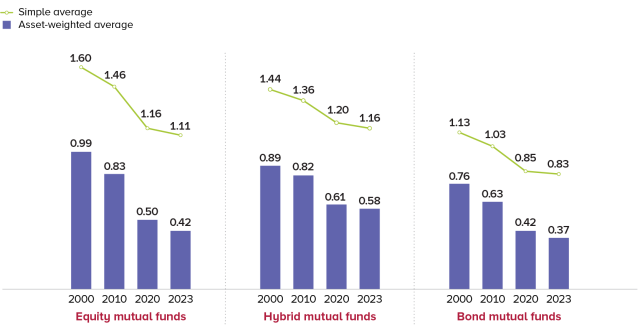
Note: Data exclude mutual funds available as investment choices in variable annuities.
Sources: Investment Company Institute, Lipper, and Morningstar. See ICI Research Perspective, “Trends in the Expenses and Fees of Funds, 2023.”
Be sure to explore our 2024 Fact Book for many more facts and insights on regulated funds and capital markets.
David Clarfield is a Writer and Editor at ICI.
